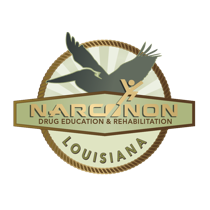Addiction and COVID

COVID-19 has been at the forefront of public attention for going on for 3 years now. Death rates have spiked, then leveled off, and now dropped because of our response to the virus. This statistical rollercoaster is diligently tracked and shared with the public. Many preparations have been implemented, and community support is widely available.
However, there is another disease running parallel with COVID, one that could have possibly been handled, yet it has received a less emphasized response from the public. The drug epidemic in the United States claimed over one hundred thousand lives in 2020, which is a 29% increase from the previous year. The other most prevalent causes of death—heart disease, cancer, and cerebrovascular disease—have all seen overall decreases in the past five years. Yet addiction to drugs, namely opioids and stimulants such as fentanyl and methamphetamine, has proven resilient to societal efforts to curb substance use and addiction.
Like COVID, addiction does not discriminate, and there are no unique trends discernible in people of contrasting genetics, demographic etc. For instance, rural areas saw a death rate of 19.6 people per 100,000, whereas urban areas saw a death rate of 22 per 100,000. Efforts at cutting the supply of these narcotics have been ineffective. The supply comes from an array of different sources, foreign and domestic. Even major American pharmaceutical companies have been found integral to the irresponsible spread of abusable prescription drugs. Johnson & Johnson recently agreed to a 26-billion-dollar settlement with the government for their role in the drug epidemic. Narcotics are being made in major factories across a number of different countries and are being shipped into the United States at a rate that makes it highly unlikely law enforcement can make a noticeable difference.

A recent trend in the manufacturing of drugs has been the utilization of sub-par chemicals to make up for the massive demand in the United States. Fentanyl, which is a cheaper alternative to heroin and 50 to 1,000 times more potent, has become a common way to ‘cut’ other drugs such as cocaine, meth, and MDMA, which has led to a spike in accidental deaths. For example, three men were arrested for the distribution of 5,000 fentanyl-laced Percocet pills in Alexandria, Louisiana. In the last month, Ohio State faced the tragic loss of two students due to fentanyl-laced pills.
Every 5 minutes, drug overdoses take another life. How do we combat something so deadly and prevalent? As previously stated, attempts to reign in the supply of these drugs have not been effective. We must cut the demand and take the fuel from the fire. This is a local approach to a global problem. Each person must do their part to reject drugs from their lives. Abstaining from drugs and the treatment of those currently affected by addiction are the most crucial weapons we have in freeing society from addiction. The days of stigmatizing drug use and persecution of the addict should be behind us.
We cannot look at addiction as a war and addicts as militants. A gentler, more understanding approach is necessary. In summation: The current drug culture is a product of our environment, peers, family, and the societal glorification of drugs in the media. When we can fully understand the problem and attack it at its root, the problem will cease to exist. Only then will we be able to negate the supply of dangerous narcotics our country has been plagued with.
Sources:
- https://www.inquirer.com/health/fentanyl-test-strips-overdoses-decriminalization-20220509.html
- https://abcnews.go.com/Health/drug-overdose-deaths-hit-high-us-pandemic/story?id=81227489
- https://www.usnews.com/news/healthiest-communities/slideshows/top-10-causes-of-death-in-america?slide=7
- https://abcnews.go.com/US/americans-suffer-deadly-fentanyl-overdoses-record-numbers/story?id=84146782
- https://www.cdc.gov/nchs/pressroom/nchs_press_releases/2021/20211117.htm
- https://www.usnews.com/news/health-news/articles/2021-03-17/drug-overdose-deaths-growing-faster-in-urban-communities
- https://www.cdc.gov/nchs/pressroom/sosmap/drug_poisoning_mortality/drug_pois


